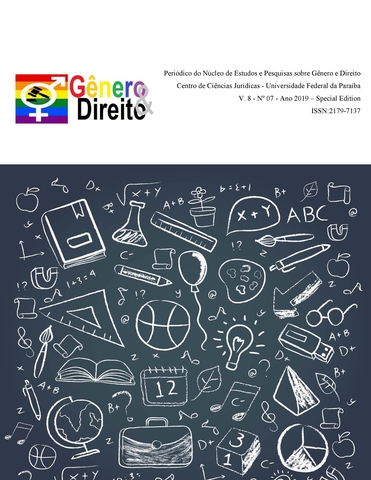THE MEANS OF EXPRESSION OF THE CATEGORY OF ADMIRATIVENESS IN RUSSIAN, FRENCH AND ENGLISH
DOI:
https://doi.org/10.22478/ufpb.2179-7137.2019v8n7.50020Palavras-chave:
language, culture, knowledge, admirativeness, intercultural communication.Resumo
The comprehension of admirativeness as an independent category took place relatively recently – at the end of the 20th century. Until now, some scholars have not recognized an independent character of admirative. However, in recent years there has been an increasingly noticeable tendency to recognize the separate role of admirativeness and to indicate that the expression of surprise evoked by unexpected information cannot be combined with similar meanings. At the same time, the ways and degree of expression of admirativeness in different language systems vary significantly. The introduction of such grammatical category as admirativeness and the term “admirative” refers to the second half of the 19th century. In 1879, O. Dozon coined the term in his works on the Albanian language. The choice of this name (Fr. admiratif comes from the verb “to admire”) is determined by the fact that the linguist interpreted the concept as a certain sense of admiration or surprise, often having an ironic character. Further the development of this direction showed that admirative had the meaning of surprise rather than admiration. In this connection, in 1997, S. de Lancey first singled out this concept into a separate grammatical category. The scholar substantiates it by the fact that in a number of languages, such as Korean, Turkish, Tibetan, Dardic, Sanvar, etc., admirative has a separate grammatical expression. The identification of admirativeness as a separate linguistic phenomenon with a number of specific features has been still the subject of controversy among the researchers. Characteristics and distinctive features of admirativeness, allowing for the separation it from other similar categories will be considered later in the paper (Davletbaeva et al., 2013). In his writings, S. de Lancey uses the term “mirative”, thereby excluding its correlation with admiration introduced by O. Dozon from the meaning of the concept, and indicating that its primary function is to convey the subject’s astonishment. To date, the term “mirative” is widely used in English-language grammar. V.A. Plugnyan notes that the use of this term is more grounded from a typological point of view, however, the use of the concept “admirative” is often retained in domestic works (Smagina, 1996).
Downloads
Referências
Dorofeyeva, N. V. (2002). Surprise as an Emotional Concept (Based on Russian and English Languages). The Dissertation for the Degree of Candidate of Philological Sciences. Specialty 10.02.20 – Comparative-Historical, Typological and Comparative Linguistics. Research Supervisor – Doctor of Philosophy, Professor S. G. Vorkachev. Kuban State Technological University, Krasnodar, 214 p.
Plungyan, V. A. (2011). Introduction to Grammatical Semantics: Grammatical Meanings and Grammatical Systems of World Languages. – M.: RSHU.
Savchenko, A. A. (2011). Identities and Transformations of Means of Expression of Admirative in French and Russian. Materials of International Philological Conference XL, March 14-19, 2011
Actual Problems of Translation Studies. Edited by prof. V.I. Shadrin. – St. Petersburg: Faculty of Philology, St. Petersburg State University, 140-146
Smagina, S. V. (1996). Verbs of Surprise in English and Russian (Comparative Approach): Author’s Theses for Candidate of Philology. Pyatigorsk, 16 p.
Davletbaeva, D., Sadykova, A., & Smirnova, E. (2013). The aspects of modern phraseology modeling. World Applied Sciences Journal (Education, Law, Economics, Language and Communication), 27, 58-62.
Foolen, A. (1997). The expressive function of language: Towards a cognitive semantic approach. The language of emotions: conceptualization, expression, and theoretical foundation, 15-32.
Guzii, T. (2014). God Phenomenon in Anglo-Saxon Mythological Image of the World. International Journal of Linguistics and Communication, 2(1), 13-25.
Hill, N. W. (2012). “Mirativity” does not exist: ḥdug in “Lhasa” Tibetan and other suspects. Linguistic Typology, 16(3), 389-433.
Yakubova, D., Pleuchova, E., & Muñoz, R. G. (2016). Linguistic and Cultural Characteristics of the Caribbean Spanish. Journal of Organizational Culture, Communications and Conflict, 20, 263

